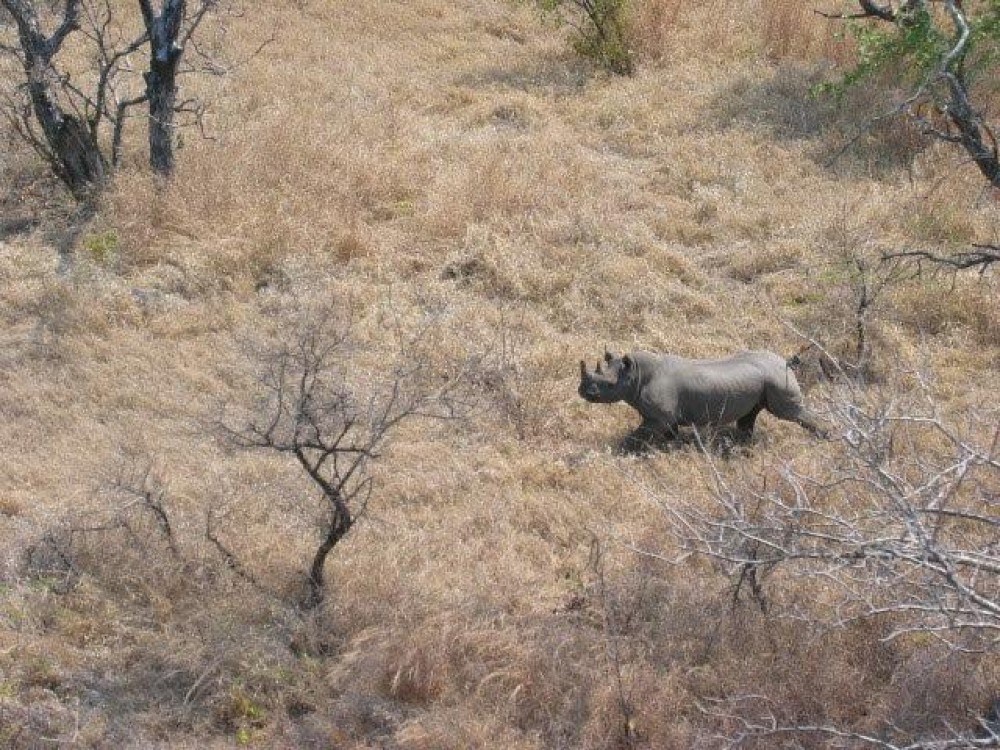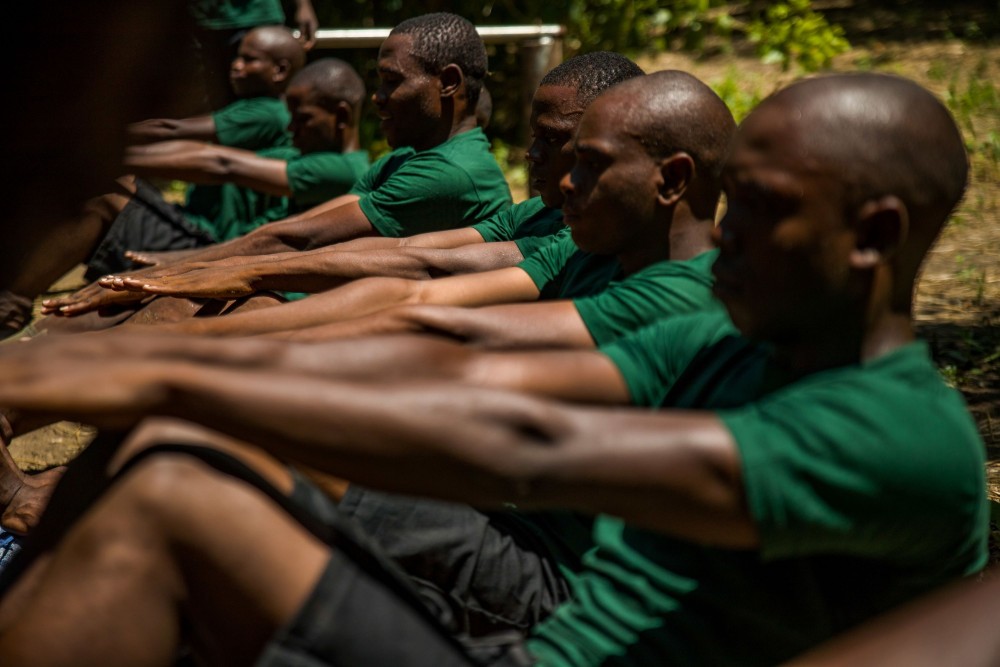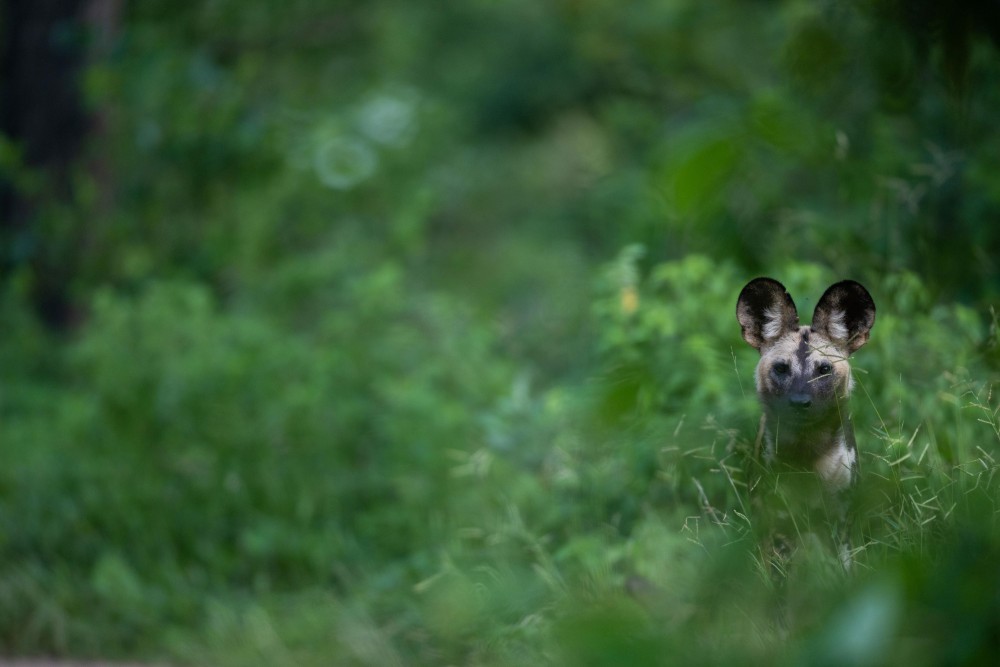Looking back on what gives a landscape its future
As we celebrate 20 years of operation in the first-ever park to come under African Parks’ management, we unpack what makes Majete Wildlife Reserve an extraordinary park - its challenges, successes and what’s on the horizon.
Malawi’s Majete Wildlife Reserve was first proclaimed as a protected area in 1951, thanks to the then Nyasaland Fauna Preservation Society (NFPS). At the time, the government policy was to hunt wildlife and chop down forest to convert into crops. But with the land around Majete Hill being unproductive for agriculture, the NFPS were able to lobby that it be protected for wildlife. In 1955 the area became Majete Game Reserve, and was renamed Majete Wildlife Reserve in 1969. One of the NFPS founding members, GD Hayes, frequently camped in the reserve and recorded his observations in a diary. From a viewing platform which he constructed in a large mahogany tree that overlooks Pwadzi Spring, he reported seeing a range of animals from duiker to buffalo and lion, hyaena and leopard. In a diary entry from 1956, Hayes speaks casually of “wild dogs playing around”. This is the last known record of the species in Majete.
Majete Goes into Decline
By all accounts, Majete was thriving in the 1950s and 60s. But in the decades that followed, the reserve began to experience dramatic declines. Poor management exacerbated by inadequate budgets and a lack of expertise on the ground led to rampant poaching and resource harvesting. By the 1980s, the last rhino were gone, large carnivores vanished in the 1990s and the park's last elephant was killed in 1992. Only a handful of antelope remained by 2002 and not a single tourist visited the park. Majete had lost its key ecological components, was a financial drain on the government and was offering no legitimate or sustainable benefits to the local communities. However, this created the ideal setting to put the newly formed African Parks’ Public Private Partnership model of protected area management to the test.

Bringing Majete Back from the Brink
"We celebrated like you can't believe when we saw some animals. That was in April, May (2003). Then we got the fencing team to come in, and by September we had a game capture team, 14,000 hectares fenced, and 599 animals successfully translocated." - Tom Turner, African Parks’ first park manager in Majete.
As an organisation, African Parks paved the way for large-scale wildlife reintroductions on the continent, by starting in Majete Wildlife Reserve. In total, almost 3,000 animals from 17 species have been brought to the reserve including black rhino in 2003, elephant in 2006, lion in 2012, giraffe in 2018, cheetah in 2019 and most recently six wild dogs were reintroduced in 2021 after a 60-year absence in the country.
With large mammal numbers now reaching over 12,000 individuals, Majete once again has flourishing populations of herbivores and predators. The recovery has been so successful that since 2016, the reserve has been able to supply over 1,100 animals to help restore other parks in Malawi, including 150 elephants as part of the historic 500 elephants translocation in 2017.
But wildlife reintroductions are only part of the story.
Protecting a Protected Area

To ensure overall park protection and collect vital data on wildlife, more than 40 rangers and wildlife monitors have been hired, building the total staff from 12 members in 2003 to 168 today. Furthermore, over 350km of road network has been constructed inside the reserve and a state of the art LoRa (Long Range) network and radio communication system installed to facilitate continuous wildlife and security tracking throughout the park. Thanks to this, the numbers of all introduced species have increased and not one rhino or elephant has been lost to poaching since they were reintroduced. To protect surrounding communities from potential conflict with wildlife, a 144km predator-proof perimeter fence is maintained by full-time fence technicians, keeping human wildlife conflict incidents around Majete to the minimum.
Positive relationships with surrounding communities are the key to success in a park like Majete. Empowering local people to participate in decision-making related to the management of the reserve is vital for the long-term survival of the park. To do this, twenty Community Based Organizations (CBOs), headed by Group Village Headmen, have been established to serve as liaison groups between Majete’s park management and local communities. These CBOs are represented under an elected umbrella body, the Majete Wildlife Reserve Association (MWRA), who work hand in hand with African Parks to make sure that communities are engaged in all community developments and provide a forum for sharing and exchanging knowledge, experiences and challenges between communities and the reserve.
“The Wildlife Reserve Association is there to make sure that Majete Wildlife Reserve is fully protected inside and outside of the park. You cannot talk about protecting conservation without talking about the community. It's a co-management - African Parks, Majete and the community all coming together.” - Davis Kaliza, Chairman of Majete Wildlife Reserve Association.
To strengthen this community collaboration, educational programmes have also been developed to create awareness around biodiversity conservation with over 50 Wildlife Clubs supported by Majete and 2,500 children brought to the reserve in 2022 to learn about wildlife conservation first-hand.
As well as providing direct employment opportunities in the park, the welfare of people living around the park have begun to improve over the past 20 years by supporting schools and providing scholarships; clinics to ensure basic health services and a profit-sharing scheme with the park’s growing tourism offering.
Thousands of people are also benefitting through enterprise programmes such as fish farming and beekeeping, which has developed profitable and sustainable businesses for local people.
“Before it was very bad here because everybody had been cutting down trees and killing animals. But, when the government partnered with African Parks, the people and communities around the reserve settled and things got better. Since then we’ve been motivated to learn beekeeping as a business, which African Parks has supported by giving us beehives. Now we have 160 beekeepers and have produced 3640 kilograms in the last season.” - Christopher Chisesa, Secretary of Namisepha Bee Keeping Cooperative.
On the Horizon for Majete

While we reflect on Majete’s progress over the past 20 years, we have also learnt from many challenges, knowing that the work in Majete is ongoing. As we celebrate the birth of the second litter of wild dog pups in the park since their historic reintroduction in 2021, we are reminded that in a fenced reserve, wildlife populations need to be managed, so that natural dispersal and genetic supplementation can occur. External threats, such as poaching and climate change, will continue to evolve and investments will always be required to adapt and respond to these. Although progress has been made in the communities, people have been severely impacted by flooding and drought and we continue to support community resilience in the face of climatic changes.
The restoration work in Majete is just the beginning and maintaining the park into the future is the next chapter. To do this we remain committed to working with the Malawi Government and local communities in ensuring that the benefits of protecting Majete continue to flow to its wildlife and the people of Malawi.
29 August 2023 – Rosie Miles, African Parks
Your Support Goes a Long Way
At African Parks we are working everyday to protect Africa's last wild landscapes. By donating to us, you are making a difference and are giving hope to people and wildlife across the continent.
Donate